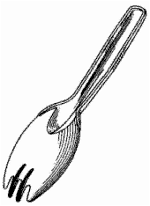Christian Schnabel
Christian Leberecht Schnabel (born May 13, 1878 in Regensburg , † January 29, 1936 in Munich ) was a German designer and inventor .
Life
The son of a German blacksmith and a Russian seamstress was at times a relatively well-known figure in public life. Schnabel's original to innovative inventions, which at the time were often classified as unsuitable for everyday use , were one reason why the designer, who had received his training in his father's forge near Regensburg, was soon on "everyone's lips" in the entire Bavarian-speaking area . That made him an ideal victim of satire. A few years before his death in the early 1930s, Schnabel even stood once on Karl Valentin’s stage and an encounter with Erich Kästner earned him his dubious fame as a chronically unsuccessful inventor. After Schnabel's death, he published a poem, which was initially written for cabaret as a kind of obituary in his lyric medicine cabinet , under the impression that the two of them met .
Inventions
“The simplest is the hardest” - this is the sentence that Schnabel, who always experimented on everyday objects and thus sought to improve, coined his life principle in his environment. His simplified cutlery, which ranged from a knife, which could also function as a fork, to a fork with only one prong, became almost legendary. The latter also dedicated his well-known poem to Schnabel, Die Fabel von Schnabel's fork , to Kästner . At the same time, of all things, this invention, which is still most prominently associated with Schnabel's name, has not been scientifically verified as to whether it really was a real development by Schnabel, because an absurd exaggeration of Kästner's is also conceivable. During his lifetime, whether such inventions were ridiculed, it is not uncommon for larger cutlery sets to contain parts that are not unlike Schnabel's inventions at the turn of the century , for example the spoon .
Art or invention?
From a different point of view, Schnabel can be described as one of the first action artists in Germany, because stories from his closest family circle after his death showed that the inventor by no means saw the practical purpose of an innovation as the focus, but the reactions of the public to its useless ones Felt inventions essential. However, it is not known to what extent this representation is a pure enhancement of Schnabel's biography. Critical voices suspected that it was above all Schnabel's widow who later tried to make “virtue out of necessity”.
A private collection with objects from Schnabel's work that can be viewed existed in Bad Homburg vor der Höhe until the 1960s , but was dissolved after the collector's death. Schnabel is still part of school lessons today.
See also
literature
- Inventor review. Verl. D. Inventor Rundsch., Munich 1913–1914.
- Rainer Thor: Humor in the house. Inventors are often big children. Mardicke, Hamburg-Poppenbüttel 1962. (Humor ins Haus, Vol. 340.)
Individual evidence
- ↑ Erich Kästner: Collected writings. Artrium Verlag, 1959.
- ^ Wilhelm Vossenkuhl : Reasonable and unreasonable knowledge. ( Memento of March 27, 2012 in the Internet Archive ) In: Naturwissenschaften. No. 79, Springer 1991, p. 97.
- ↑ Ulrich Metschl: On the value of science and the benefit of research: On the social role of academic science , Wiesbaden 2016, p. 6f.
- ↑ Erich Kästner yearbook. Volume 4, 2004, p. 99.
- ↑ Helge Dickau: special weapon. On the edge of the plate: the spoon is rare, but has found its niche. ( Memento of the original from March 4, 2016 in the Internet Archive ) Info: The archive link was inserted automatically and has not yet been checked. Please check the original and archive link according to the instructions and then remove this notice. (PDF; 369 kB) In: Weserkurier from August 19, 2012, p. 26
- ↑ Headquarters for educational media on the Internet : The Fable of Schnabel's Fork , accessed on August 21, 2016
- ↑ Banteer National School: Science 5th & 6th Class , p. 120, accessed on August 21, 2016
| personal data | |
|---|---|
| SURNAME | Schnabel, Christian |
| ALTERNATIVE NAMES | Schnabel, Christian Leberecht |
| BRIEF DESCRIPTION | German designer and inventor |
| DATE OF BIRTH | May 13, 1878 |
| PLACE OF BIRTH | regensburg |
| DATE OF DEATH | January 29, 1936 |
| Place of death | Munich |

